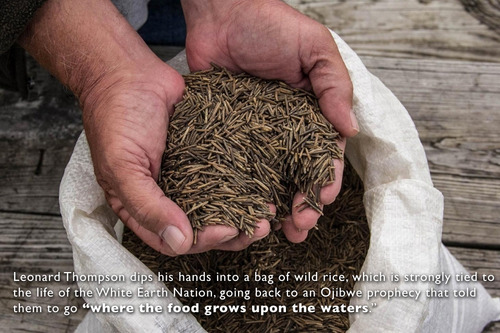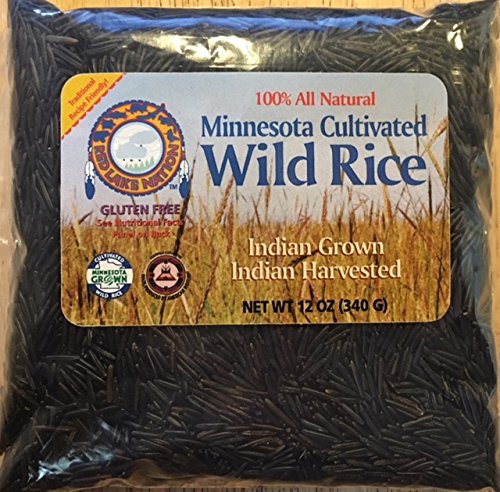Watch: Bill Nye Uses Science To Defend Women’s Reproductive Rights.










Watch: Bill Nye uses science to defend women’s reproductive rights.
More Posts from Missalexgreenturtle and Others
Genius cat

(Via)
Did you know? You can buy wild rice direct from Native folks!
Wild rice isn’t actually rice-it’s a grass seed that grows naturally in lakes in Minnesota and Wisconsin, and it’s been an indigenous staple food for many, many centuries. Although some corporations have taken and grown “wild rice” in paddies, it is not the same thing- it is actually a hybrid seed that is not the same quality and often sold for a higher price anyways.

Not only is the wild rice a sacred food, but is a form of Indigenous science that lets you know how healthy the water is (or isn’t), because water is life and affects the health of all people, plants, and animals that live with it. This has been belatedly acknowledged by very recent research from the University of Minnesota that the health of the wild rice can predict all health of lakes and streams.
I buy my wild rice from the Red Lake Nation and the White Earth Nation.
The cool thing about buying from the White Earth Nation is that they also have videos showing the traditional processes involved in harvesting and parching the rice, and they offer stuff like gift baskets, chokecherry preserves, maple candy, soup & pancake mix, and cookbooks which make great gifts!

What I like about buying from the Red Lake Nation is there is a massive variety and quantity of different wild rice products at many different prices! They are aware that the broken grains are not as quality, but it doesn’t go to waste-you can buy the broken grains for “Soup Bits” ($3.49) which are an inexpensive way to add flavor & nutrition to soups and stews. They also offer “Quick Cook” wild rice ($5.69), which is prepared from a lighter roast/parch process that allows the grains to cook in a shorter amount of time and has a rich, traditional flavor.
You can also buy syrups and jellies made from hand harvested hawthorn, chokecherry, and highbush cranberry there.
BUT! If you’re worried about shipping costs or like me, are disabled/have limited mobility and can’t always get to the store like you might prefer,Red Lake Nation also sells their rice through Amazon, eligible for Prime shipping. This is also good for those, Native or not, who are struggling in the community and share their wishlists for help purchasing food.(Also please know this post is only meant to share information, not to make anyone feel bad or imply they’re eating “inferior” food.)
If you’re interested in finding out what other nations cultivate and sell/trade wild rice, there’s a partial list here of where you can buy hand-harvested wild rice from native people in the Great Lakes region
Plant Witchcraft: A Beginner’s Guide to Growing
I would like to start this post out by saying I am in no way a professional and have only been studying/practicing witchcraft for about a year. I just know a lot about plants and the ability to sense the health/needs of a plant comes very naturally to me (I will make a post about how to do this soon!)
EASIEST PLANTS TO GROW IN WITCHCRAFT~
IN ORDER FROM EASIEST TO HARDEST
• Chives- can grow in limited light and space, very easily propagate (regrow)
• Mint- very hardy, requires shade and some light, start from seeds
• Cilantro- fast growing, can be planted indoors, does not transplant easily, Is NOT perpetual (dies after it flowers, wilts quickly, pretty much dead after one growing season. @rwt-mystic-corner)
• Basil- can grow in small spaces, require sun, start from seeds
• Parsley- easy to grow, low maintenance and limited lights, though hard to germinate
• Oregano (wild marjoram)- very hardy, easy to grow in winter, requires full sun
• Sage- large, hardy, start from cuttings, requires full sun
• Thyme- requires full sun, hardy, easy to propagate from seeds or cuttings
• Aloe Vera- easy to overwater, low maintenance, slow growing, little water, full sun (they are a desert plant)
• Chamomile- low maintenance, little water, full sun with some shade, easy to overwater
• Dill- start as seeds, small, easy to grow indoors, hard to overwater, requires full sun
• Rosemary- though very large, easy to grow indoors and easy to overwater
• Bay laurel- requires well-draining soil, full sun, water often, grows large, slow growing
• Lavender- hard to grow indoors, requires little water, best in dry conditions, start from seeds
• Roses- requires full sun, seasonal, grows only outside, requires fertilizer, best grown from transplants
SOURCES: Easy to grow herbs | More easy to grow herbs | Gardening resource | @thesigilwitch helped to compile this list
INDOOR VS. OUTDOOR~
THE ONGOING ARGUMENT
Pro-Outdoors
As a green witch with a strong yearning to be at one with nature, I prefer to grow my plants outside. I have a small garden (about 4’ by 4’ and 10” deep) that I have several plants in, mostly succulents. Though my garden is small, it’s very peaceful for me to have my own little space that I can survey all at once. I’ve never grown a large garden and so can’t say if it is better/worse. If you are going to plant outside but have little space to do so, a little garden is a simple solution. This also allows your plants to get more sun, fresh air and space to grow.
Con-Outdoors
Winds, heavy rain or a hot/cold front can easily kill off more delicate herbs and plants. Animals like birds, cats and mice might be attracted to outdoor gardens, and though these animals are delightful to be around, they rarely leave your garden at peace. Planting outdoors is all-in-all a less controlled environment and, though it is more natural, can be tough with little experience.
Pro-Indoors
If you live in an apartment or can’t plant outdoors, an indoor garden is ideal for you. Plants used in witchcraft like herbs and flowers can be easily grown indoors provided they have enough light and proper care. Having plants inside can really help create a safe space and keeps them from the harm of rain and unwanted animals or bugs. It also gives you easy surveillance of your plants.
Con-Indoors
Plants can easily die if they are strangled by too much care, and beginner gardeners can be over-bearing. The biggest problem with growing indoors is that most plants require 4-6 hours of full sunlight a day and windows are just unable to provide this amount of light. Also, keeping plants in small pots tends to strangle new growth, and limits a plants ability to grow very large. While your plants might be kept warm in the winter, it’s less worth watching large plants struggle indoors.
Conclusion~
Indoor planting is good for beginners or those with little outside space or building ability, but don’t be too over-bearing and make sure they get enough light and fresh air. Outside gardening is better if your plants are healthy and hardy and should be left to more experienced gardeners with enough space to tackle the project.
HOW TO PLANT ANYTHING~
IF YOU DON’T HAVE A “GREEN THUMB”
My Experience
Even though I consider myself a green witch, I also struggled with this in the beginning. Before I really learned to read the health of my plants, they would die without me even knowing it. I thought, “I can’t even keep a cactus alive!” Well, cacti are actually quite hard to care for if you don’t know what to look for. In fact, everything is. Plants are hard to care for if you don’t know what to look for. So first, do your research. Plants have two basic needs: food and water.
Research
Research how this plant grows in the wild. If it grows in the desert, it probably needs a lot of sun and little water. If it grows on the rainforest floor, it needs to be consistently moist and doesn’t need much light. It is important to replicate plants’ natural conditions to keep them healthy. Research is everything.
Food
Plants need sun, and most need lots of it. Plants have to have sun or they can’t produce enough “food” for themselves and they starve. 4-6 hours of good window sun is enough for most plants. If a plant is growing in an odd direction, growing too tall or dropping leaves at the bottom while wilting, it is probably not getting enough sun. Slide it towards a window or put it outside on sunny days.
Water
On that note, plants need water. This is by far the biggest thing “black-thumb” people struggle with! If you buy the wrong kind of soil, it can drown a plant even if you never water it. If you over-water in the winter, your plant may freeze. Again, think about the plant in the wild. A good tip is to see how thick the leaves are! A cactus is essentially one big leaf, and they are very thick and round, therefore they need very little water because they store it in their “leaf.” A big tree with many leaves or a stalky plant needs a lot of water because it can’t retain any. If a plant is yellowing, mushy or dropping leaves while others remain plump, it is being overwatered. Do not water it again until all the soil feels bone-dry. If it is being under-watered, a plant will be wilted, brown or yellow and the soil will be very dry.
SOURCES: Growing herbs indoors
PLANT IDENTIFICATION~
WHAT IF I CAN’T I.D. MY PLANT?
Help
A lot of people struggle with this and, if you didn’t buy your plant as a baby from a store that includes labels, then you might not know what your plant even is! Stores like Home Depot, most plant nurseries and private growers label their plants and how to care for them. But if you find yourself not knowing what your plant is, here are some helpful tips.
I’ll divide this plant identification into 2 categories: simple and advanced.
Simple I.D. information
(simple identification tools such as types of leaves, plant anatomy, and easy to use interactive identification)
How to I.D. leaves
How to I.D. flowers
Quiz for determining plant species
Types of Plants
Popular Houseplants
Advanced Resources
(requires knowledge of dichotomous keys, latin names and meanings, and some complex plant anatomy. These are probably more accurate.)
Understanding Latin Binomencalture
Latin Nomenclature of Plant Species
Dichotomous Key to Plant Families
How to Google your Plant-
Of course, Google is always your best friend! If you can determine the type of leaf, flower, color or species from the easy-to-use guides, you can just google it!
SOURCES: The ask this information came from asked by @fuzzzyuniverse
WHERE TO GET HERBS IF YOU CAN’T PLANT THEM~
CONVENIENCE OF STORE-BOUGHT HERBS
Most local supermarkets sell herbs with other spices, in small containers, either ground or whole. While these herbs have already been preserved and possibly seasoned, it is a quick, easy and time/money-saving option for any witch. There is a certain magickal property to growing your own herbs, but it is by no means necessary! I don’t grow any herbs at all; I buy them all from the store. Preparing your own herbs goes much farther than just being able to grow them, and knowing it has been done right by a professional is certainly magickal. They work just fine and are often more enjoyable to smell or eat because they have been grown professionally.
HELPFUL GARDENING TIPS~
AWESOME LINKS N’ STUFF
Herb list from @thebluechicory HERE | More about indoor growing | Micro-gardening tips (outdoors)
I hope this had been of some help to you! If any links are broken or you would like me to add/edit something, just shoot me a message. Happy growing!
Toad Words
Frogs fall out of my mouth when I talk. Toads, too.
It used to be a problem.
There was an incident when I was young and cross and fed up with parental expectations. My sister, who is the Good One, has gold fall from her lips, and since I could not be her, I had to go a different way.
So I got frogs. It happens.
“You’ll grow into it,” the fairy godmother said. “Some curses have cloth-of-gold linings.” She considered this, and her finger drifted to her lower lip, the way it did when she was forgetting things. “Mind you, some curses just grind you down and leave you broken. Some blessings do that too, though. Hmm. What was I saying?”
I spent a lot of time not talking. I got a slate and wrote things down. It was hard at first, but I hated to drop the frogs in the middle of the road. They got hit by cars, or dried out, miles away from their damp little homes.
Toads were easier. Toads are tough. After awhile, I learned to feel when a word was a toad and not a frog. I could roll the word around on my tongue and get the flavor before I spoke it. Toad words were drier. Desiccated is a toad word. So is crisp and crisis and obligation. So are elegant and matchstick.
Frog words were a bit more varied. Murky. Purple. Swinging. Jazz.
I practiced in the field behind the house, speaking words over and over, sending small creatures hopping into the evening. I learned to speak some words as either toads or frogs. It’s all in the delivery.
Love is a frog word, if spoken earnestly, and a toad word if spoken sarcastically. Frogs are not good at sarcasm.
Toads are masters of it.
I learned one day that the amphibians are going extinct all over the world, that some of them are vanishing. You go to ponds that should be full of frogs and find them silent. There are a hundred things responsible—fungus and pesticides and acid rain.
When I heard this, I cried “What!?” so loudly that an adult African bullfrog fell from my lips and I had to catch it. It weighed as much as a small cat. I took it to the pet store and spun them a lie in writing about my cousin going off to college and leaving the frog behind.
I brooded about frogs for weeks after that, and then eventually, I decided to do something about it.
I cannot fix the things that kill them. It would take an army of fairy godmothers, and mine retired long ago. Now she goes on long cruises and spreads her wings out across the deck chairs.
But I can make more.
I had to get a field guide at first. It was a long process. Say a word and catch it, check the field marks. Most words turn to bronze frogs if I am not paying attention.
Poison arrow frogs make my lips go numb. I can only do a few of those a day. I go through a lot of chapstick.
It is a holding action I am fighting, nothing more. I go to vernal pools and whisper sonnets that turn into wood frogs. I say the words squeak and squill and spring peepers skitter away into the trees. They begin singing almost the moment they emerge.
I read long legal documents to a growing audience of Fowler’s toads, who blink their goggling eyes up at me. (I wish I could do salamanders. I would read Clive Barker novels aloud and seed the streams with efts and hellbenders. I would fly to Mexico and read love poems in another language to restore the axolotl. Alas, it’s frogs and toads and nothing more. We make do.)
The woods behind my house are full of singing. The neighbors either learn to love it or move away.
My sister—the one who speaks gold and diamonds—funds my travels. She speaks less than I do, but for me and my amphibian friends, she will vomit rubies and sapphires. I am grateful.
I am practicing reading modernist revolutionary poetry aloud. My accent is atrocious. Still, a day will come when the Panamanian golden frog will tumble from my lips, and I will catch it and hold it, and whatever word I spoke, I’ll say again and again, until I stand at the center of a sea of yellow skins, and make from my curse at last a cloth of gold.
Terri Windling posted recently about the old fairy tale of frogs falling from a girl’s lips, and I started thinking about what I’d do if that happened to me, and…well…

Harry Potter’s Butter Beer Recipe!
Ingredients: 1 can of cold cream soda ¾ tbsp of caramel syrup whipped cream
Pour the cream soda into a large glass mug Mix with caramel syrup (Stir well) Top with whipped cream
She is oxygen, carbon, hydrogen, nitrogen, calcium, and phosphorus. The same elements that are inside the rest of us, but I can’t help thinking she’s more than that and she’s got other elements going on that no one’s ever heard of, ones that make her stand apart from everybody else.
Jennifer Nevin, All the Bright Places (via theliteraryjournals)
sometimes i think about the parents
the parents from coruscant to the farthest reaches of the galaxy, who have just become new parents, or perhaps are welcoming their third or fourth
it’s subtle at first, so subtle it’s easy to miss
their baby is different
maybe they’re worried. ‘what’s wrong with my baby? will they be ok? are they sick? they don’t cry like my others, doctor.’
maybe they’re amazed. ‘he has such a way with animals. she always seems to know when it will rain. what amazing reflexes! i’ve never seen a child with such a green thumb!’
it only becomes more apparent as time passes. seasons change, children grow, people talk, and the reality that their beloved child has been gifted with something beyond their comprehension becomes a reality that can no longer be ignored
and then, one day, the jedi arrives
they arrive on the doorsteps of homes both humble and opulent, armed with a soothing demeanor, a benign smile, and an explanation that simultaneously relieves and terrifies
sometimes i think about the horrid realization that, despite a willingness to lay down their own life for their child, despite their attempts to provide to the best of their ability, it is not enough. it never will be
sometimes i think of the tearful goodbyes - goodbyes that are not made any less painful with the knowledge that their decision is in the best interest of their baby
‘will they remember me?’ a parent wonders as they gaze with blurry eyes at the retreating form of the jedi, who carries away their entire world, swaddled in fabric that still smells of home. ‘will they remember my lullabies? my voice? will they remember how loved they were?’
years pass. the absence is a gaping wound that never truly heals. they follow the news, daily, scouring titles and clips for information- hoping to catch a glimpse or the smallest assurance that their child is well, growing, prospering
and then, one day, the news stops. everything changes, and nothing could ever prepare them for what follows
governments fall, an empire rises, and parents across the galaxy are rendered immobile, breathless, and shattered at the uttering of one simple sentence:
the jedi are no more
sometimes i think about the parents.
The Easiest Way To Grow Tomato Seedlings
-
 lartdumond reblogged this · 2 months ago
lartdumond reblogged this · 2 months ago -
 naomijameston liked this · 2 months ago
naomijameston liked this · 2 months ago -
 chronicles-of-koystee reblogged this · 2 months ago
chronicles-of-koystee reblogged this · 2 months ago -
 forimportanntstuff reblogged this · 3 months ago
forimportanntstuff reblogged this · 3 months ago -
 greengirlmilk liked this · 3 months ago
greengirlmilk liked this · 3 months ago -
 wolfsilverlight reblogged this · 3 months ago
wolfsilverlight reblogged this · 3 months ago -
 wolfsilverlight liked this · 3 months ago
wolfsilverlight liked this · 3 months ago -
 keykingronnied reblogged this · 3 months ago
keykingronnied reblogged this · 3 months ago -
 abbessolute reblogged this · 3 months ago
abbessolute reblogged this · 3 months ago -
 zombie-daddy liked this · 3 months ago
zombie-daddy liked this · 3 months ago -
 babyyfaceddemon reblogged this · 3 months ago
babyyfaceddemon reblogged this · 3 months ago -
 babyyfaceddemon liked this · 3 months ago
babyyfaceddemon liked this · 3 months ago -
 pixeled-freckles reblogged this · 3 months ago
pixeled-freckles reblogged this · 3 months ago -
 goldenshibe reblogged this · 3 months ago
goldenshibe reblogged this · 3 months ago -
 goldenshibe liked this · 3 months ago
goldenshibe liked this · 3 months ago -
 ellebellelunabelle liked this · 3 months ago
ellebellelunabelle liked this · 3 months ago -
 feen-feet liked this · 3 months ago
feen-feet liked this · 3 months ago -
 kierawaffles reblogged this · 3 months ago
kierawaffles reblogged this · 3 months ago -
 fenristsukigami reblogged this · 3 months ago
fenristsukigami reblogged this · 3 months ago -
 fenristsukigami liked this · 3 months ago
fenristsukigami liked this · 3 months ago -
 manavamp liked this · 3 months ago
manavamp liked this · 3 months ago -
 tomonohebi reblogged this · 3 months ago
tomonohebi reblogged this · 3 months ago -
 tomonohebi liked this · 3 months ago
tomonohebi liked this · 3 months ago -
 rammyrue reblogged this · 3 months ago
rammyrue reblogged this · 3 months ago -
 kawaiidesu reblogged this · 3 months ago
kawaiidesu reblogged this · 3 months ago -
 kawaiidesu liked this · 3 months ago
kawaiidesu liked this · 3 months ago -
 xining20 liked this · 4 months ago
xining20 liked this · 4 months ago -
 blackcatmaya liked this · 4 months ago
blackcatmaya liked this · 4 months ago -
 shit-people-probably-didnt-say liked this · 4 months ago
shit-people-probably-didnt-say liked this · 4 months ago -
 pewpew08 reblogged this · 4 months ago
pewpew08 reblogged this · 4 months ago -
 namelessman2 liked this · 4 months ago
namelessman2 liked this · 4 months ago -
 smallraccoon13 liked this · 4 months ago
smallraccoon13 liked this · 4 months ago -
 no32557038 liked this · 4 months ago
no32557038 liked this · 4 months ago -
 notreallysureyett liked this · 5 months ago
notreallysureyett liked this · 5 months ago -
 bunnitjump liked this · 5 months ago
bunnitjump liked this · 5 months ago -
 pu55yswag liked this · 5 months ago
pu55yswag liked this · 5 months ago -
 nxtbbx liked this · 5 months ago
nxtbbx liked this · 5 months ago -
 mixordiaperifericatropical liked this · 6 months ago
mixordiaperifericatropical liked this · 6 months ago -
 catnipkdodo liked this · 6 months ago
catnipkdodo liked this · 6 months ago -
 mikithewooloo reblogged this · 6 months ago
mikithewooloo reblogged this · 6 months ago -
 aurora-ursa liked this · 6 months ago
aurora-ursa liked this · 6 months ago -
 cinemasiren reblogged this · 6 months ago
cinemasiren reblogged this · 6 months ago -
 everythngisfine liked this · 6 months ago
everythngisfine liked this · 6 months ago -
 kasbreanne reblogged this · 6 months ago
kasbreanne reblogged this · 6 months ago -
 headab0vethewavez reblogged this · 6 months ago
headab0vethewavez reblogged this · 6 months ago -
 insert-metaphor-here reblogged this · 7 months ago
insert-metaphor-here reblogged this · 7 months ago -
 halcyon79 reblogged this · 7 months ago
halcyon79 reblogged this · 7 months ago -
 sw087 reblogged this · 7 months ago
sw087 reblogged this · 7 months ago -
 sleeplessinackerman reblogged this · 7 months ago
sleeplessinackerman reblogged this · 7 months ago